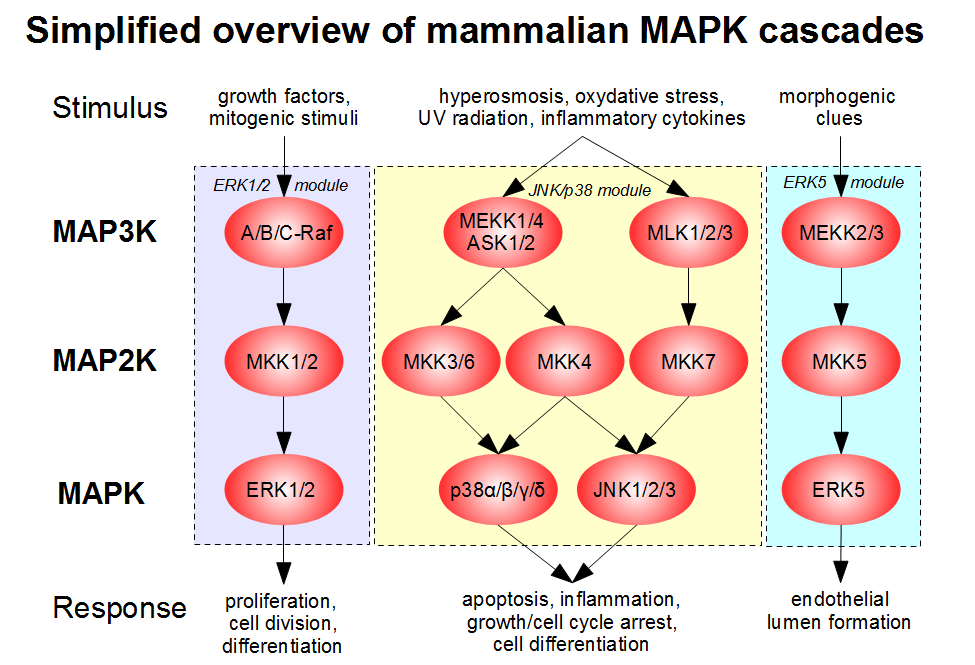|
Ethacrynic Acid
Etacrynic acid ( INN) or ethacrynic acid ( USAN), trade name Edecrin, is a loop diuretic used to treat high blood pressure and the swelling caused by diseases like congestive heart failure, liver failure, and kidney failure. A disadvantage with ethacrynic acid, compared to the other loop diuretic drugs such as furosemide, is that it has a significantly steep dose-response curve. This means the drug's dosing is very important as small variance in dose can cause a significant difference in the biological response. Unlike the other loop diuretics, etacrynic acid is not a sulfonamide and may thus be used in individuals with sulfa allergies in whom the sulfonamide loop diuretics would be contraindicated. Structural features Ethacrynic acid is a phenoxyacetic acid derivative, and contains an α,β-unsaturated ketone group. Medical use Ethacrynic acid is a diuretic that is used to treat edema when a stronger agent is required. It is available as a pill or injected form. The pill i ... [...More Info...] [...Related Items...] OR: [Wikipedia] [Google] [Baidu] |
Hypokalemia
Hypokalemia is a low level of potassium (K+) in the blood serum. Mild low potassium does not typically cause symptoms. Symptoms may include feeling tired, leg cramps, weakness, and constipation. Low potassium also increases the risk of an abnormal heart rhythm, which is often too slow and can cause cardiac arrest. Causes of hypokalemia include vomiting, diarrhea, medications like furosemide and steroids, dialysis, diabetes insipidus, hyperaldosteronism, hypomagnesemia, and not enough intake in the diet. Normal potassium levels in humans are between 3.5 and 5.0 mmol/L (3.5 and 5.0 mEq/L) with levels below 3.5 mmol/L defined as hypokalemia. It is classified as severe when levels are less than 2.5 mmol/L. Low levels may also be suspected based on an electrocardiogram (ECG). The opposite state is called hyperkalemia that means high level of potassium in the blood serum. The speed at which potassium should be replaced depends on whether or not there are symptom ... [...More Info...] [...Related Items...] OR: [Wikipedia] [Google] [Baidu] |
Chloroarenes
In organic chemistry, an aryl halide (also known as a haloarene) is an aromatic compound in which one or more hydrogen atoms directly bonded to an aromatic ring are replaced by a halide ion (such as fluorine F''−'', chlorine Cl−1,−3,−5, bromine Br−1, or iodine I−). Aryl halides are distinct from haloalkanes (alkyl halides) due to significant differences in their methods of preparation, chemical reactivity, and physical properties. The most common and important members of this class are aryl chlorides, but the group encompasses a wide range of derivatives with diverse applications in organic synthesis, pharmaceuticals, and materials science. Classification according to halide Aryl fluorides Aryl fluorides are used as synthetic intermediates, e.g. for the preparation of pharmaceuticals, pesticides, and liquid crystals. The conversion of diazonium salts is a well established route to aryl fluorides. Thus, anilines are precursors to aryl fluorides. In the classic Schiemann ... [...More Info...] [...Related Items...] OR: [Wikipedia] [Google] [Baidu] |
Acetic Acids
Acetic acid , systematically named ethanoic acid , is an acidic, colourless liquid and organic compound with the chemical formula (also written as , , or ). Vinegar is at least 4% acetic acid by volume, making acetic acid the main component of vinegar apart from water. Historically, vinegar was produced from the third century BC and was likely the first acid to be produced in large quantities. Acetic acid is the second simplest carboxylic acid (after formic acid). It is an important chemical reagent and industrial chemical across various fields, used primarily in the production of cellulose acetate for photographic film, polyvinyl acetate for wood glue, and synthetic fibres and fabrics. In households, diluted acetic acid is often used in descaling agents. In the food industry, acetic acid is controlled by the food additive code E260 as an acidity regulator and as a condiment. In biochemistry, the acetyl group, derived from acetic acid, is fundamental to all forms of life ... [...More Info...] [...Related Items...] OR: [Wikipedia] [Google] [Baidu] |
Piceol Ethers
Piceol is a phenolic compound found in the needles and in mycorrhizal roots of Norway spruces (''Picea abies''). Picein is the glucoside of piceol. Uses Piceol is used in the synthesis of several pharmaceutical drugs including octopamine, sotalol, bamethan, and dyclonine. Piceol can be used to make acetaminophen by condensation with hydroxylamine and subsequent Beckmann rearrangement in acid. Anticonvulsants are also possible by Mannich reaction: Metabolism Diprenylated derivatives of piceol can be isolated from '' Ophryosporus macrodon''. 4-Hydroxyacetophenone monooxygenase is an enzyme that transforms piceol into O-acetylhydroquinone. This enzyme is found in ''Pseudomonas fluorescens''. See also * Paroxypropione, where the acetyl In organic chemistry, an acetyl group is a functional group denoted by the chemical formula and the structure . It is sometimes represented by the symbol Ac (not to be confused with the element actinium). In IUPAC nomenclature, ... [...More Info...] [...Related Items...] OR: [Wikipedia] [Google] [Baidu] |
Loop Diuretics
Loop diuretics are pharmacological agents that primarily inhibit the Na-K-Cl cotransporter located on the luminal membrane of cells along the thick ascending limb of the loop of Henle. They are often used for the treatment of hypertension and edema secondary to congestive heart failure, liver cirrhosis, or chronic kidney disease. While thiazide diuretics are more effective in patients with normal kidney function, loop diuretics are more effective in patients with impaired kidney function. Mechanism of action Loop diuretics are 90% bonded to proteins and are secreted into the proximal convoluted tubule through organic anion transporter 1 (OAT-1), OAT-2, and ABCC4. Loop diuretics act on the Na+-K+-2Cl− symporter (NKCC2) in the thick ascending limb of the loop of Henle to inhibit sodium, chloride and potassium reabsorption. This is achieved by competing for the Cl− binding site. Loop diuretics also inhibit NKCC2 at macula densa, reducing sodium transported into macula densa ... [...More Info...] [...Related Items...] OR: [Wikipedia] [Google] [Baidu] |
Disulfiram-like Drugs
A disulfiram-like drug is a drug that causes an adverse reaction to alcohol leading to nausea, vomiting, flushing, dizziness, throbbing headache, chest and abdominal discomfort, and general hangover-like symptoms among others. These effects are caused by accumulation of acetaldehyde, a major but toxic metabolite of alcohol formed by the enzyme alcohol dehydrogenase. The reaction has been variously termed a '' disulfiram-like reaction'', ''alcohol intolerance'', and ''acetaldehyde syndrome''.Mutalik, M., & Sanghavi, D. (2014). ''Review of Drug Interactions: A Comprehensive Update''. The prototypical drug of this group is disulfiram (brand name Antabuse), which acts as an acetaldehyde dehydrogenase inhibitor, preventing the metabolism of acetaldehyde into acetic acid, and is used in the treatment of alcoholism. A variety of other drugs cause disulfiram-like reactions upon consumption of alcohol as unintended drug interactions and side effects. Many disulfiram-like drugs act a ... [...More Info...] [...Related Items...] OR: [Wikipedia] [Google] [Baidu] |
Generic Drug
A generic drug is a pharmaceutical drug that contains the same chemical substance as a drug that was originally protected by chemical patents. Generic drugs are allowed for sale after the patents on the original drugs expire. Because the active chemical substance is the same, the medical profile of generics is equivalent in performance compared to their performance at the time when they were patented drugs. A generic drug has the same active pharmaceutical ingredient (API) as the original, but it may differ in some characteristics such as the manufacturing process, formulation, excipients, color, taste, and packaging. Although they may not be associated with a particular company, generic drugs are usually subject to government regulations in the countries in which they are dispensed. They are labeled with the name of the manufacturer and a generic non-proprietary name such as the United States Adopted Name (USAN) or International Nonproprietary Name (INN) of the drug. A generic ... [...More Info...] [...Related Items...] OR: [Wikipedia] [Google] [Baidu] |
Specialty Pharmacy
Specialty pharmacy refers to distribution channels designed to handle specialty drugs — pharmaceutical therapies that are high cost, high complexity or high touch. High touch refers to higher degree of complexity in terms of distribution, administration, or patient management which drives up the cost of the drugs. In the early years specialty pharmacy providers attached "high-touch services to their overall price tags" arguing that patients who receive specialty pharmaceuticals "need high levels of ancillary and follow-up care to ensure that the drug spend is not wasted on them." An example of a specialty drug that would only be available through specialty pharmacy is interferon beta-1a ( Avonex), a treatment for MS that requires a refrigerated chain of distribution and costs $17,000 a year. Some specialty pharmacies deal in pharmaceuticals that treat complex or rare chronic conditions such as cancer, rheumatoid arthritis, hemophilia, H.I.V. psoriasis, inflammatory bowel disease ... [...More Info...] [...Related Items...] OR: [Wikipedia] [Google] [Baidu] |
Xenobiotic Metabolism
Xenobiotic metabolism (from the Greek xenos (Greek), xenos "stranger" and biotic "related to living beings") is the set of metabolic pathways that modify the chemical structure of xenobiotics, which are compounds foreign to an organism's normal biochemistry, such as drugs and poisons. These pathways are a form of biotransformation present in all major groups of organisms, and are considered to be of ancient origin. These reactions often act to detoxification, detoxify poisonous compounds; however, in cases such as in the metabolism of Alcohol (drug), alcohol, the intermediates in xenobiotic metabolism can themselves be the cause of toxic effects. Xenobiotic metabolism is divided into three phases. In phase I, enzymes such as cytochrome P450 oxidases introduce reactive or polar groups into xenobiotics. These modified compounds are then conjugated to polar compounds in phase II reactions. These reactions are catalysed by transferase enzymes such as glutathione S-transferases. Fin ... [...More Info...] [...Related Items...] OR: [Wikipedia] [Google] [Baidu] |
Glutathione S-transferase
Glutathione ''S''-transferases (GSTs), previously known as ligandins, are a family of eukaryote, eukaryotic and prokaryote, prokaryotic Biotransformation#Phase II reaction, phase II metabolic isozymes best known for their ability to Catalysis, catalyze the conjugation of the reduced form of glutathione (GSH) to xenobiotic substrate (biochemistry), substrates for the purpose of detoxification. The GST family consists of three superfamilies: the cytosolic, mitochondrial, and microsomal—also known as MAPEG family, MAPEG—proteins. Members of the GST superfamily are extremely diverse in amino acid sequence, and a large fraction of the sequences deposited in public databases are of unknown function. The Enzyme Function Initiative (EFI) is using GSTs as a model superfamily to identify new GST functions. GSTs can constitute up to 10% of cytosolic protein in some mammalian organs. GSTs catalyse the conjugation of GSH—via a sulfhydryl group—to electrophilic centers on a wide var ... [...More Info...] [...Related Items...] OR: [Wikipedia] [Google] [Baidu] |
Macula Densa
In the kidney, the macula densa is an area of closely packed specialized cells lining the wall of the distal tubule where it touches the glomerulus. Specifically, the macula densa is found in the terminal portion of the distal straight tubule ( thick ascending limb of the loop of Henle), after which the distal convoluted tubule begins. The cells of the macula densa are sensitive to the concentration of sodium chloride in the thick ascending loop of henle. A decrease in sodium chloride concentration initiates a signal from the macula densa that has two effects: (1) it decreases resistance to blood flow in the afferent arterioles, which raises glomerular hydrostatic pressure and helps return the glomerular filtration rate (GFR) toward normal, and (2) it increases renin release from the juxtaglomerular cells of the afferent and efferent arterioles, which are the major storage sites for renin. As such, an increase in sodium chloride concentration would result in vasoconstrictio ... [...More Info...] [...Related Items...] OR: [Wikipedia] [Google] [Baidu] |



